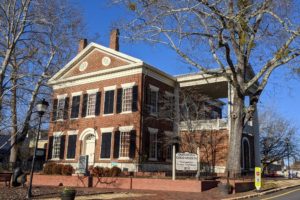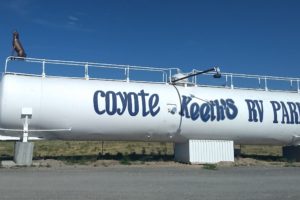As mentioned in the previous post, Tryon Palace in New Bern is a place I’ve wanted to come to for almost 20 years. Now we’re here. So what’s the big deal about this place? Tryon Palace, formerly called Governor’s Palace, Newbern, was the official residence and administrative headquarters of the British governors of North Carolina from 1770 to 1775.
As we entered the palace and walked through the rooms, it reminded me of a smaller version of the Governor’s Palace in Williamsburg. You may want to check out our visit there in our way home from our visit to Canada’s Maritime Provinces when we visited Colonial Williamsburg (Click here to see the Governor’s Palace.)

Tryon Palace was originally built between 1767 and 1770 (built much later than the palace in Williamsburg) as the first permanent capitol of the Colony of North Carolina and a home for the Royal Governor, William Tryon, and his family. He was provided with $5000 (we were told) to build this home, but with his extravagant tastes and desire to show the British might, he needed so much more money. Where would it come from? You’re right, taxes. People in North Carolina who would never see this palace weren’t happy about it and let the governor know. Of course the British army put down the dissent.
When the building was finished, it was regarded to be one of the finest public buildings in the American colonies. Governor Tryon, his wife Margaret Wake Tryon, and their daughter Margaret lived in the Palace for just over a year. They left New Bern in June 1771, when Governor Tryon was appointed to the governorship of New York. The second governor, Josiah Martin, to live in the Palace, fled in May of 1775 at the beginning of the American Revolution. His furnishings were later auctioned off by the newly formed state government. Patriots made the Palace their capitol and the first sessions of the General Assembly met there to begin designing a free and independent state.

In 1798 a fire broke out that destroyed the home. The Kitchen Office to the left (that we’ll see soon) was destroyed in the early 1900s. Only the Stable Office on the right have remained where they have always been.
In the 1930s a group of prominent women in New Bern decided that the palace needed to be rebuilt as it had been. Volunteers were able to track down John Hawks’ original architectural plans, so we know that what we see today is how the palace was originally built. To start the building, first about 50 homes in a very poor part of town had to be destroyed and NC Route 70 had to be rerouted, including a bridge over the Trent River.

Archaeological digs followed. Soon they uncovered the original palace foundation, directly under the site that the highway had occupied. Layers of stucco were removed from the Stable Office, the only remaining part of the 1770 complex.
When it was time to furnish the house, the volunteers found that Governor Tryon had left a detailed list of his furnishings in his New York home before it had burned down, so they knew what to look for as they went to England to look for items to furnish this home. They also knew what colors the governor preferred in his home so they could provide the home that we see today that opened in April 1959.
If you’re wondering where we are today, here’s a screenshot that will help.

On the map you can see the inland waterways that protect the land from the Atlantic Ocean. Now to the house.










When the original stairway was built, no one in the Americas had the skill to build it. So Governor Tryon commissioned it to be built in England and then brought over in pieces to be reassembled in his home.

upstairs
Governor Tryon built this palace for his own family of a wife and daughter so the second floor fit his needs. The next governor had six children, so it must have been crowded.







back stairs to the cellar


The cellar has the bedrooms for the housekeeper and the butler on either side of the two rooms in the following picture; these 2 employees were the top 2 staff members in a wealthy British home.





Kitchen Office

“Office” was the general term for any work space. On the first floor, the original architect, well known John Hawks, had plans for a secretary’s office, a kitchen, a scullery, and a wash house. The second floor was intended for servants and a laundry.

While here at the palace in 1769, the governor had 8 male and 2 female African-American slaves. In his New York home in 1773, he had at least 12 household servants, most with last names so weren’t slaves. Some of his New Bern staff could have gone with him to New York.
The following information is from “A Servant’s Life.” We’ll start with the first floor.



Each day the governor and his family (and guests) had a hearty midday dinner with a lighter breakfast and supper. He planned on having a French cook who set up the kitchen the way he wanted, but this cook died of disease before he arrived.



The next 2 rooms were the scullery (dishes) and laundry.


The linen was dried on bushes, fences, or even a clothesline before it was taken upstairs to the dry laundry for ironing.
upstairs
The second floor was set up to show us what these rooms could have looked like.


Her flatirons were heated on the hearth or she used a box iron with a heated slug inside. To keep from scorching the laundry with a too-hot iron, she would drop some water on the iron and make sure it sizzled and then disappeared.

The other two bedrooms were for female (3 to a room) and male servants (4 to a room).


Press beds, which folded up when not in use could save floor space. Mattresses were stuffed with straw, curled horsehair, or other materials and were held in place by ropes or canvas sacking stretched across the bed frame.
Stable Office

At one time the stable office was used as apartments. Can you image the noise from the highway that once ran through what is now the house?

gardens








Now onto Wilmington.




